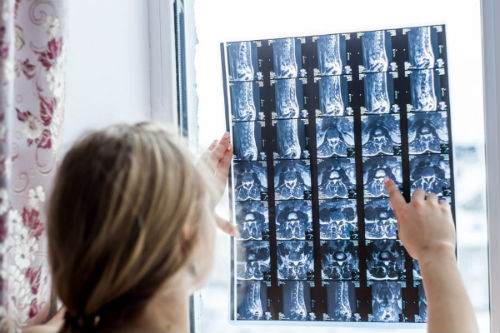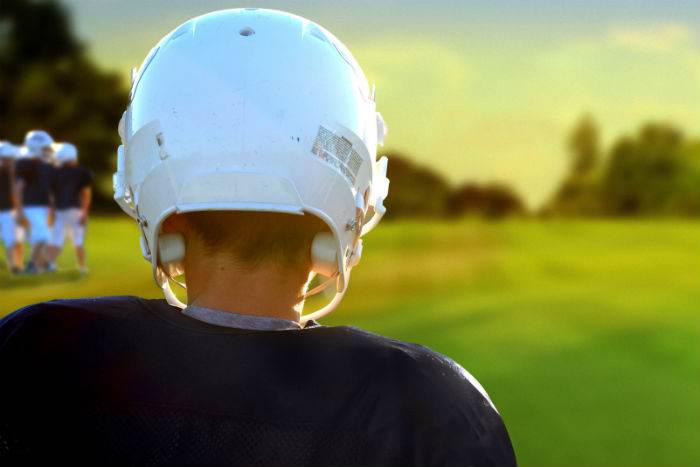Piriformis Syndrome: 6 Exercises For Buttock Pain Relief
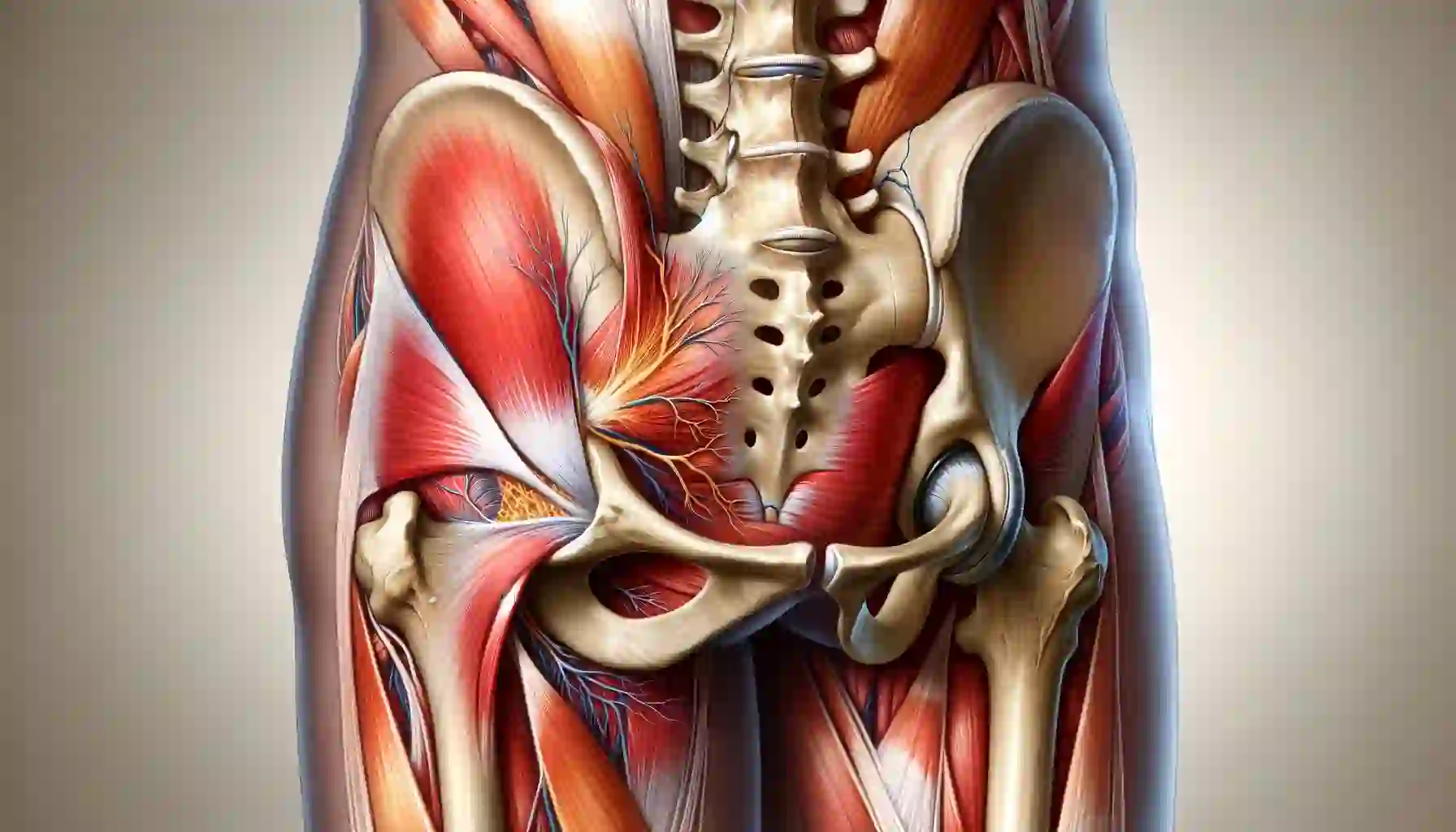
Understanding the Difference: Herniated Discs vs. Piriformis Syndrome
Are you experiencing persistent buttock discomfort exacerbated by sitting? Does this discomfort occasionally radiate into your leg, resembling sciatica? Have you received a diagnosis of either disc herniation or piriformis syndrome?
Differentiating Symptoms
In this article, I aim to clarify the distinction between herniated discs and piriformis syndrome, followed by presenting six exercises tailored for piriformis syndrome.
Piriformis Muscle: Anatomy and Function
The piriformis muscle, nestled deep within the buttock, tends to tighten and become irritated under pressure, such as prolonged sitting. Its primary function is to externally rotate the hip, facilitating weight transfer between feet. However, it is frequently confused with herniated discs.
See Also: Your Guide To Disc Herniations & Disc Bulges
See Also: Best Self-Treatment For Your Disc Herniation
Similarities and Confusions
Both herniated discs and piriformis syndrome can manifest as buttock pain and sciatica, leading many healthcare professionals to misdiagnosis. While disc herniation, sacroiliac syndrome, and facet syndrome are commonly identified, piriformis syndrome diagnosis is often overlooked.
Divergent Treatments
Notably, treatments for disc herniation differ from those for piriformis syndrome.
Empowering Self-Diagnosis
To aid in accurate diagnosis, I will outline self-administered tests you can perform, empowering you to collaborate effectively with your chiropractor or medical practitioner during the diagnostic process.
Picture of sciatic nerve and piriformis muscle
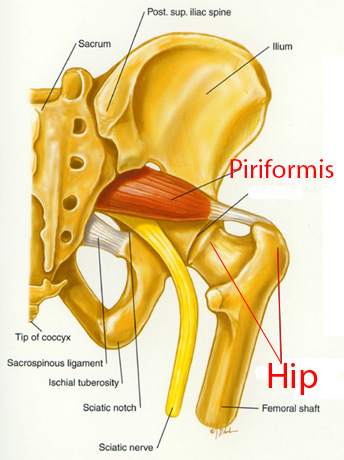
Most of you (96%) have your sciatic nerve come out underneath the piriformis muscle as shown in the picture above. [1] You can see the sciatic nerve but you can’t see that it is formed by 5 nerves that join together. The picture below shows nerves from the lower back and pelvis joining together to form the sciatic nerve.
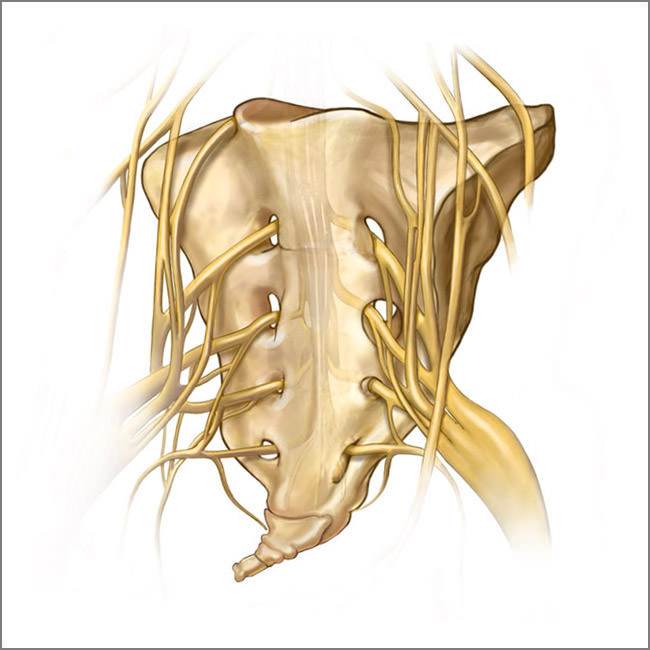
For the unlucky few though the sciatic nerve passes right through the piriformis muscle. This makes your piriformis muscle more vulnerable to pain. The piriformis muscle often gets tight naturally from sitting too much. We weren’t designed to sit for so long and put so much pressure, on this muscle. When the muscle gets tight the nerve gets irritated and causes a vicious circle of pain.
Tight Piriformis ->> Nerve Irritation->>Tighter piriformis ->> More Nerve Irritation
This vicious circle whatever the cause will likely make you feel pain in the buttock especially the hip area (2nd picture above) and right near the sacrum (2nd picture above). You might even have difficulty walking.[2]
Tests For Piriformis Syndrome
The first key test to look for with piriformis syndrome is when you sit down. Lift your bad side foot onto the seat of the chair then bring your bad leg toward the opposite chest. You might feel some pain if you have another problem like a disc bulge. With piriformis syndrome, this manoeuvre will give your buttock agonizing pain, or at least a lot more pain. [3-4] You might have pain in the hip area or right in the middle of the buttock or more toward the centre of the pelvis, and even sciatica. This sign along with several other positive signs increases the likelihood that you have piriformis syndrome.
See Also: MRI, CAT Scans & X-rays Your Guide
This minor test although not a key sign is, that if you push on your buttock and feel pain in the above areas it may be a sign that you have piriformis syndrome. It is easier to lie down on your back with a tennis ball underneath your buttock.
The second key test is when you lie down on your back. Both of your feet should point upwards. If you find that on the side of your painful butt, your toes are going outward more you have a tight piriformis muscle. The piriformis’ job is to turn your hip out. When it’s tight your foot will be forced to turn out. The real key is when you try to bring your toes back toward the center you will be faced with some pain. This further increases the chance that you have piriformis syndrome.[5-6]
The second minor test. Your tight piriformis can cause the sacrum to rotate and cause a short leg on the tight piriformis side.[7-8] Do you have a short leg on the side of your painful piriformis? This is a difficult one to tell but you can try by sitting on the floor with your legs straight out in front of you. Try to have your body straight and your arms in the same spot. Even your head should be looking straight ahead.
In the picture below you can see that the left foot is short.
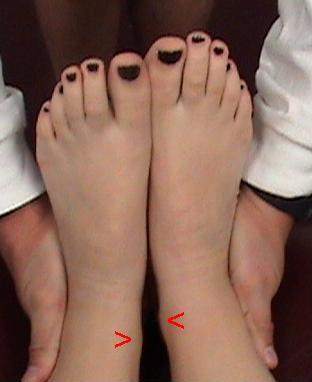
http://www.maximumtrainingsolutions.com/Anatomical-Leg-Length-Inequality.html
X-rays and MRI For Piriformis Syndrome
X-rays and MRIs won’t tell you if you have piriformis syndrome. They usually do more to persuade medical doctors and chiropractors that you have something other than piriformis syndrome. In other words, X-rays and MRIs can often mislead your health practitioner.
After finding a lot of the above tests that we talked about positive your chiropractor should have piriformis syndrome as one of the number of possible diagnoses. Your chiropractor will do other tests to determine if the piriformis muscle is involved. Then they take an X-ray or MRI or a CAT Scan. That’s when things go wrong.
Most of you who are 40 years of age and older have degenerative disc disease. It might be mild or moderate. The report says degenerative disc disease, disc herniation or even osteoarthritis. The problem is these problems that are visible on X-ray don’t necessarily cause any pain.
See also: Degenerative Disc Disease: Remedies For Lower Back Osteoarthritis
See Also: Part 2 Exercises – Degenerative Disc Disease: Best Exercises To Help Your Lower Back Pain
Your X-ray report says you have moderate degenerative disc disease and you have sciatica that matches the pinched nerve from degenerative disc disease. The X-rays have found your diagnosis right? Pictures of degenerative disc disease in some cases influence your medical doctor or chiropractor. Some may even disregard your exam finding or more commonly, they don’t do the other tests to begin with, letting the X-rays become the overriding factor instead of confirming a diagnosis that they previously had in their head. Your chiropractor or doctor in that case will miss the diagnosis.
If your chiropractor doesn’t think about a possible diagnosis they can’t do the test.
Keep in mind there are orthopaedic tests that your chiropractor will use to help diagnose you. Since you can’t do them yourself I won’t go over those tests here.
Treatment for Piriformis Syndrome
#1 Piriformis Stretch: Seated
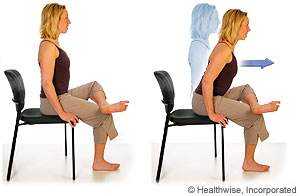
https://myhealth.alberta.ca/health/AfterCareInformation/pages/conditions.aspx?hwid=zp4551
- Sit in a sturdy chair.
- Cross your affected leg over your knee, resting your foot on top of your knee.
- Keep your back straight, and slowly lean forward until you feel a stretch in your hip.
- Hold for 30 seconds.
#2 Piriformis Stretch: Laying Down
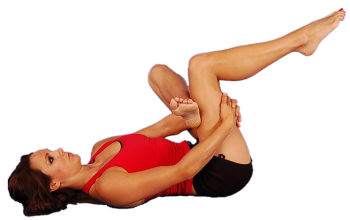
- Lay down on your back.
- Cross the affected leg over the other bent leg.
- Pull the unaffected leg towards you until you feel the stretch.
- Hold for 30 seconds 3 times.
#3 Stretch Your Hip Stabilizer: Gluteus Medius – Pigeon Pose

- Start on all fours like a crawl position.
- Bring your right leg forward and bend with the other leg straight back.
- Reach out forward with your body till you feel it in your hips.
Do this for 30 seconds 3 times.
#4 Bridge Exercises: For Piriformis Syndrome
This exercise is for those who are not quite ready for the next two exercises.
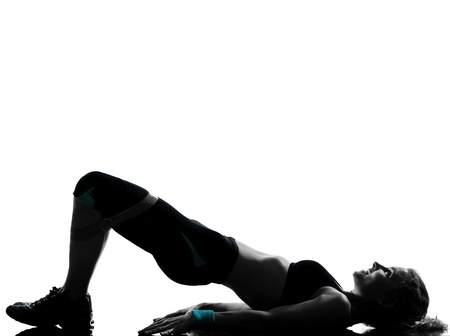
- Get on your back with your knees bent and hands down by your side.
- Lift until your torso is straight like in the picture above.
- Go back down and when you touch the floor, go back up again.
Do this exercise 15 times for 3 sets.
#5 Chair Squats For Piriformis Syndrome
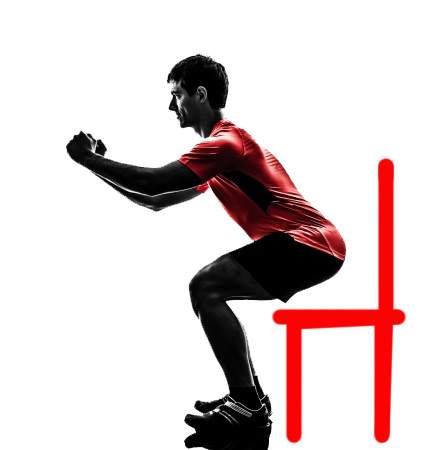
- Stand in front of a chair with your knees shoulder-width apart.
- Turn your toes out slightly
- Go to sit down leading with your buttock until your butt touches the chair.
- When your buttock touches the chair get back up again without resting.
Advanced: Don’t use a chair and go to 90 degrees.
# 6 Strengthen Your Hips: Lunges
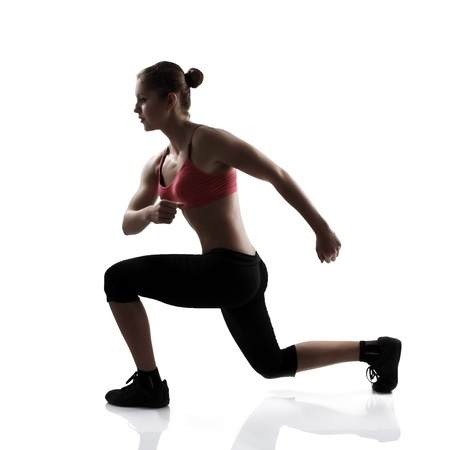
- Stand with your legs together and arms at your sides
- Step two to three feet (60-90 cm) forward with your left foot.
- Bend both of your knees to lower yourself into a lunge.
- Each knee should be 90 degrees. Keep your knee directly over your ankle so you don’t strain your knee.
- Push off with your left leg and return to the starting position.
- Repeat with your other leg.
Do this 10X on each leg. 3 sets should be fine.
If you have trouble doing this you can do a more shallow lunge by not going down as deep.
Feel free to share your questions, thoughts and experiences in the comments below, and don’t forget to connect with us on Facebook for more updates and tips on improving your health. We’d love to hear your opinions on who you consider the best Toronto chiropractor.
Research
1. 15. Beason LE, Anson B.J. The relation of the sciatic nerve and its subdivisions to the piriformis muscle. Anat Record. 1937;70:1-5.
2. Lori A. Boyajian-O’Neill, DO et al, Journal of the American Osteopathic Association, Diagnosis and Management of Piriformis Syndrome: An Osteopathic Approach
3. Chaitow L. Soft Tissue Manipulation: A Practitioner’s Guide to the Diagnosis and Treatment of Soft-Tissue Dysfunction and Reflex Activity. 3rd ed. Rochester, Vt: Healing Arts Press;1988 .
4. Benson ER, Schutzer SF. Posttraumatic piriformis syndrome: diagnosis and results of operative treatment. J Bone Joint Surg Am. 1999;81:941-949
5. TePoorten BA. The piriformis muscle. J Am Osteopath Assoc. 1969;69:150-160.
6. DiGiovanna EL, Schiowitz S, Dowling DJ, eds. An Osteopathic Approach to Diagnosis and Treatment. 3rd ed. Philadelphia, Pa: Lippincott Williams & Wilkins;2005 .
7. Retzlaff EW, Berry AH, Haight AS, Parente PA, Lichty HA, Turner DM, et al. The piriformis muscle syndrome. J Am Osteopath Assoc. 1974;73:799-807
8. Grant JH. Leg length inequality in piriformis syndrome. J Am Osteopath Assoc.1987;87:456
9. Kevork Hopayian et al., The clinical features of the piriformis syndrome: a systematic review. Eur Spine J. Dec 2010; 19(12): 2095–2109.
Note:
Piriformis is a pure abductor at 90 degrees knee flexion-Test resisted abduction
Piriformis at 60 degrees is external rotator - test resisted external rotation.Related Categories: Back Pain, Disc Herniation, Hip, Shoulder, Trauma, Uncategorized




